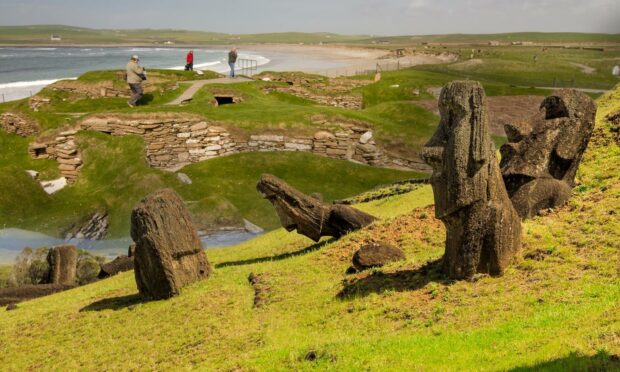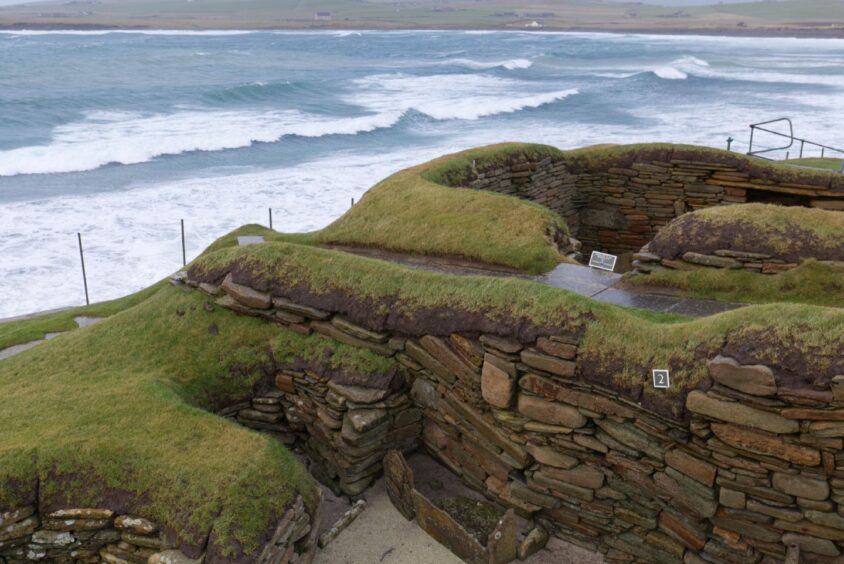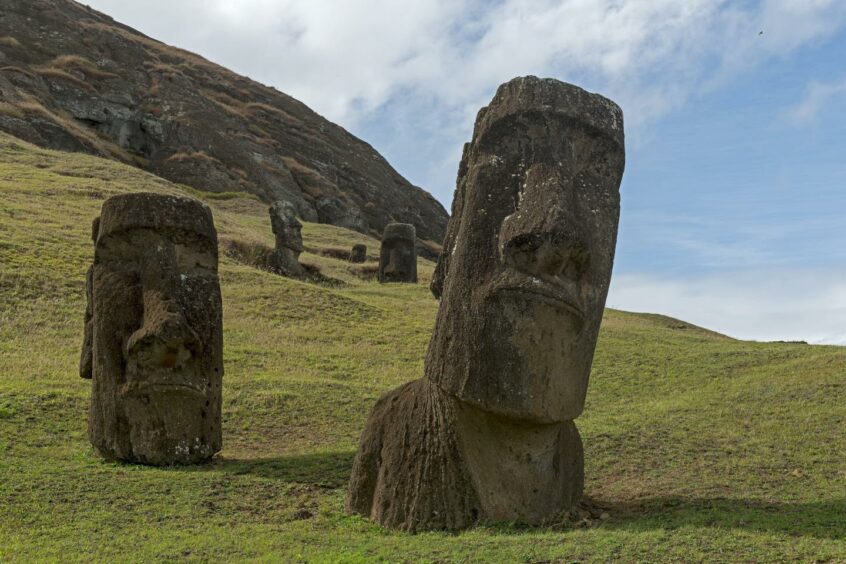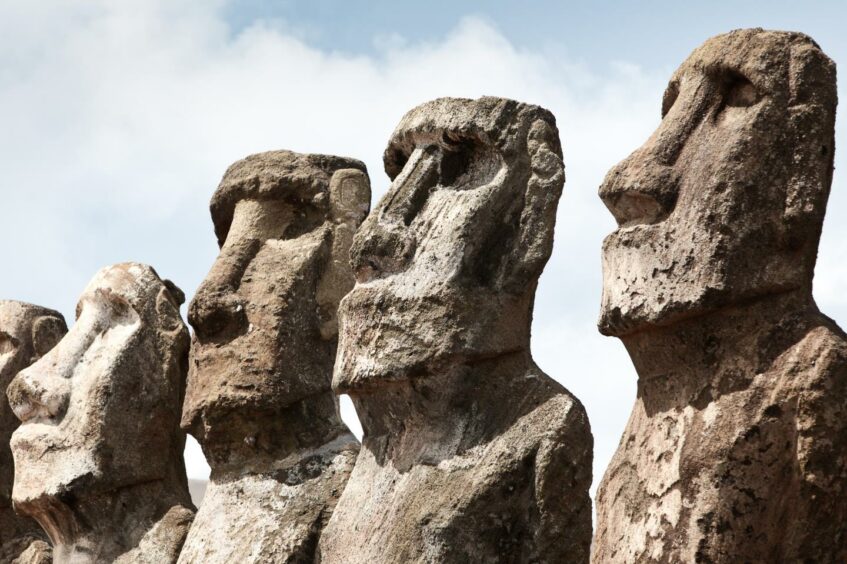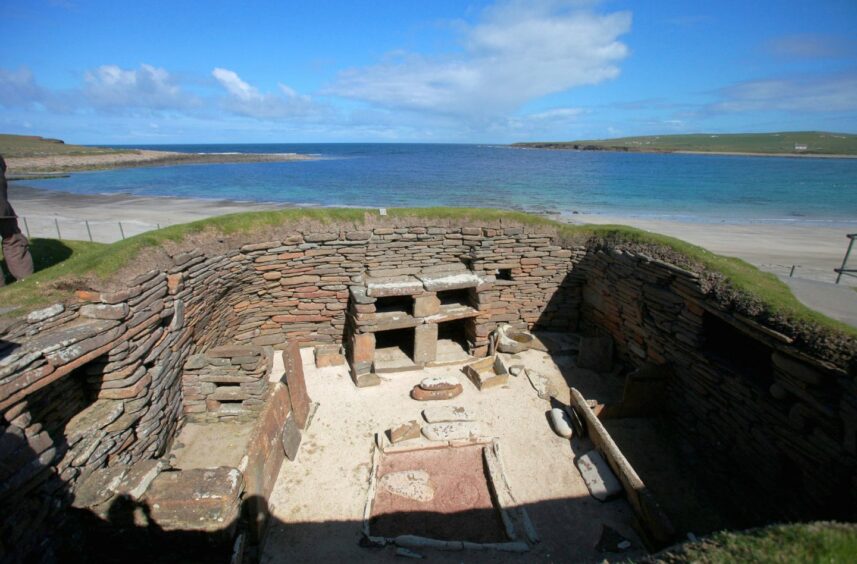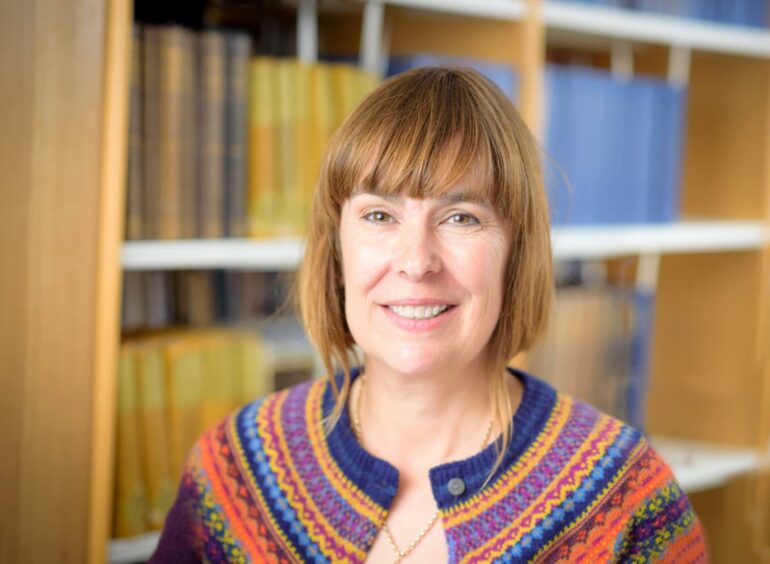What do the giant statues of Easter Island and the Neolithic settlement of Skara Brae in Orkney have in common?
Apart from both being UNESCO World Heritage Sites, these coastal areas of vast archaeological importance are both directly threatened by climate change.
Professor Jane Downes, director at the archaeology institute of the University of the Highlands and Islands (UHI), has this week travelled from Orkney to Glasgow to speak at COP26 about the risks a changing climate pose to some of the most important sites of humanity’s history in the world.
She explained that factors like changing weather and coastal erosion brought about by increasing global temperatures disproportionately affects smaller islands like Orkney and Easter Island, which is also known as Rapa Nui.
Older than the pyramids
But she argued the very plight of the likes of Skara Brae, which is older than the Great Pyramids of Giza, and the almost 1,000 stone moai statues of Easter Island can act as an emblem to get people interested in saving the planet.
Jane said: “The main threats to the sites that I’ve been looking at are erosion through sea level rise and increased storminess, this has been shown for quite a few years now to be having an impact on sites that are on coasts.
“And on the coasts of both Orkney and Rapa Nui, there are a huge amount of archaeological sites, particularly the iconic sites of Skara Brae and the platforms that the statues are placed on in Rapa Nui, and the majority of these sites are under threat from erosion.”
Without action, there is a very real risk that key parts of humanity’s history on islands across the world could be swallowed up by the sea.
‘A highly potent symbol of climate change’
Jane continued: “This can draw people’s attention to climate change and act as a wake up call, if you like, in a similar way to images of polar bears on icebergs.
“It’s a highly potent symbol of the reality and actuality of climate change, particularly for people who are interested in our world’s heritage, and value it.
“There are sites in Orkney, the Western Isles, and other parts of Scotland which have been falling into the sea.
“Climate change has been having an observable effect for decades, so myself and colleagues have been observing this and trying to salvage sites for many years.
“Prehistoric buildings can be exposed and then destroyed over the matter of a few years.”
Can I watch the professor’s lectures?
Jane is giving her talks on climate change and archaeology via the prestigious Dalrymple Lectures at Glasgow University.
She and her fellow academics from UHI have been at Glasgow to take part in all manner of events as part of COP26.
You can register to watch Jane’s lectures online for free here.
